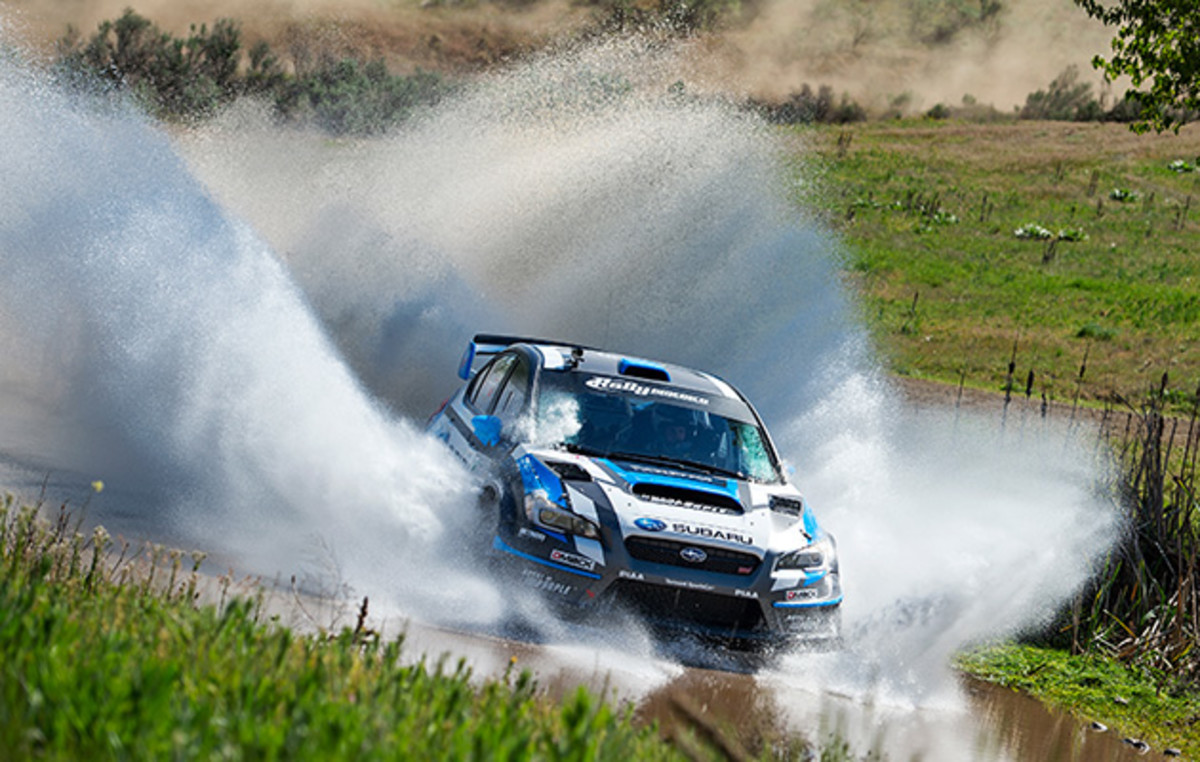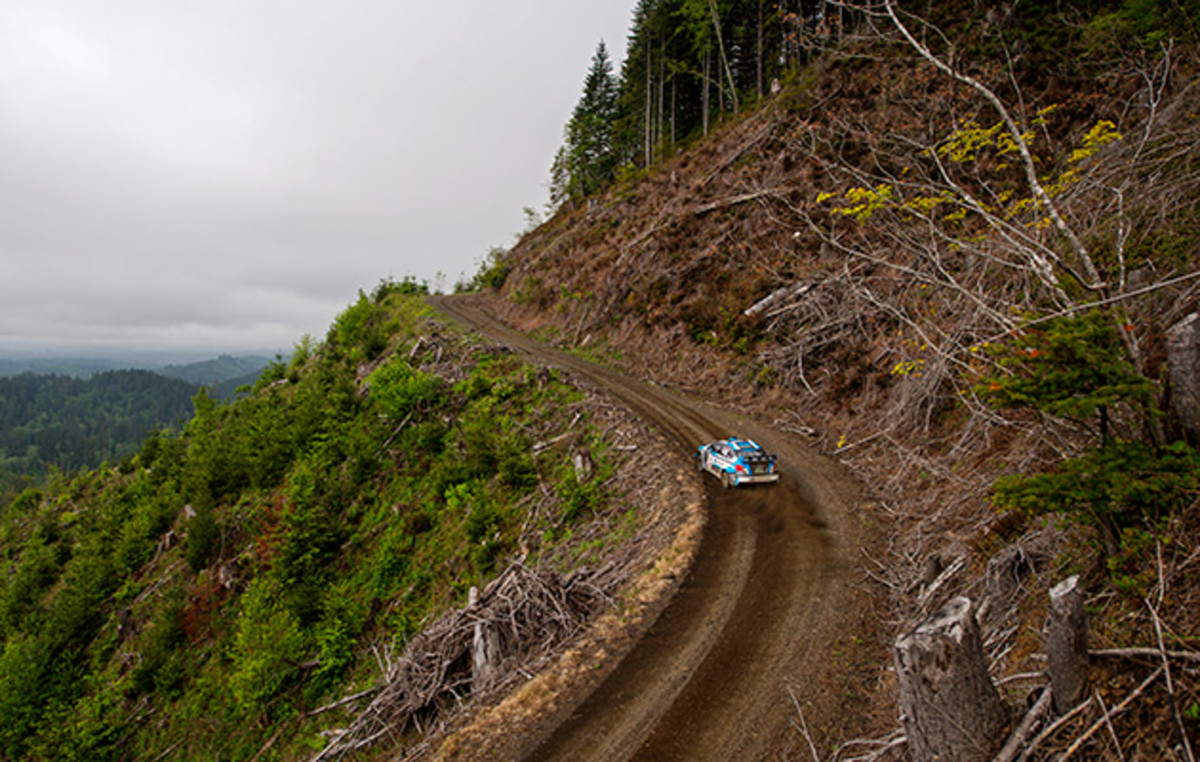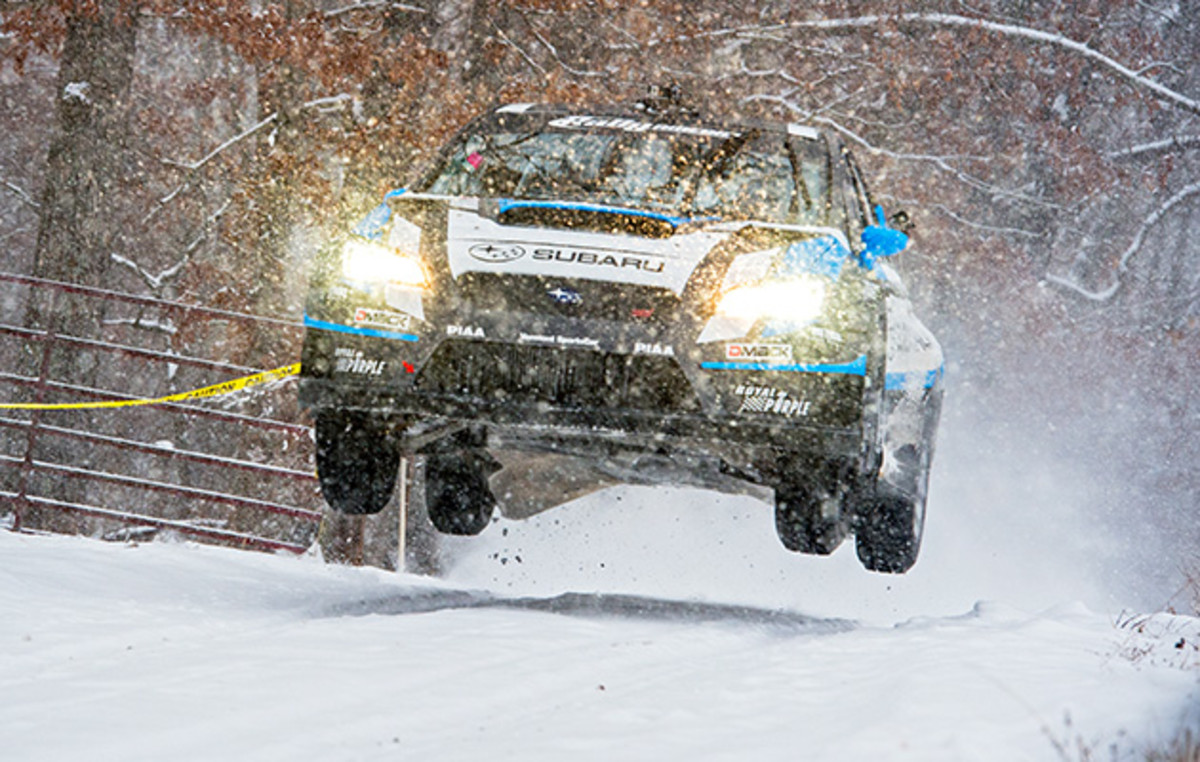King of the road: Subaru driver David Higgins rules American Rally

While NASCAR’s high-octane traveling circus is taking over New Hampshire Motor Speedway this weekend, one of the most dominant drivers in motor sports will be plying his trade next door, in Maine, outside the Sunder River Ski Resort.
At the 25th annual New England Forest Rally, July 17-18, Subaru Rally Team USA driver David Higgins and co-driver Craig Drew are aiming to sew up their 12th consecutive Rally America Class victory in the past two years, and their fifth straight overall Rally America National Championship.
“I couldn’t win a rally by just being a good driver,” says Higgins, a 41-year-old native of the Isle of Man in Great Britain. “I couldn’t win a rally by just being in a good car. You have to have everything together, and it has to be together at the right time. And that’s something that the team this year has really, really clicked with. We all feel very good about the product we’ve got, the car we’ve got, the partners we have within the team.”
Yet Higgins, the defending Forest Rally champ, won’t even be the biggest celebrity at the Forest Rally, held along the western edge of Vacationland. That honor will fall to Travis Pastrana, the Red Bull poster boy and star of the Nitro Circus Live world tour. In what is being billed as the Battle of the Titans, Higgins and Pastrana—teammates on the Subaru Rally Team USA—will square off against Ken Block, who won the Forest Rally in 2013, and Ramana Lagemann, both of the U.S.
“You just have to be there to see it,” says John Buffum, the Subaru team manager and a Vermont rally legend. “During their autograph signings, you’ll see Block signing autographs, and Higgins signing autographs. But Pastrana's line is around the block.”
Hyper Aware: What it's like to drive the $2.4 million McLaren P1 GTR hypercar
For Higgins, though, celebrity isn't the goal. Winning is. Coincidentally, Higgins joined the Subaru squad in 2011 as Pastrana’s replacement. Last year, the two dueled on New Hampshire’s Mount Washington Auto Road, in the celebrated Climb to the Clouds race, which Higgins and Drew won in record-setting fashion after Pastrana’s car suffered a flat.
“He’s a hell of a competitor to have on the team,” says Higgins of Pastrana. “He just never gives in. He’s always pushing. He always wants to do more.”
Clearly, so does Higgins. He has ruled the rally scene since 2011, winning 20 of the 33 rallies he has entered. This year, Higgins is positioned to complete the first “perfect season” in American rally since Buffum pulled off the feat in 1987.
“There’s certainly way more hype around the [Maine] event, because those guys [Block and Pastrana] are here,” says Higgins, who won his first rally crown in 1993. “But in my world, I approach every rally exactly the same way. People talk about me going through this perfect season, and winning every rally. I literally give no thought to past records, or what I’ve achieved in the past.

“Every single rally I go to I go with the exact same intention, and that’s to give the absolute best I can do. I want to win it. I don’t go into any event thinking ‘These people are going to be here, so it’s going to be different.’ It doesn’t change anything in terms of how I approach it, apart from there’s more excitement outside. For me, internally, it’s exactly the same.”
Given the unique characteristics of rally racing, Higgins’s approach is sound strategy. Unlike the head-to-head racing in NASCAR or IndyCar, held on paved ovals or street courses, a rally is a series of time trials. The cars go out at intervals, racing against the course, and the clock. The fastest cumulative time over the weekend, which features as many as two-dozen stages and more than 120 total miles, wins.
“You race the road as hard as you can possibly go, and then you see where you are against your competition afterward,” says Higgins. “In racing, you’re always battling your direct competition, and you can see where that competition is gaining time. But in rallying, we’ve got zero idea until we finish the stage of how anybody else has done.
Jet Stet: An SI editor earns his wings with the high-flying Breitling team
“It makes it a very friendly sport, in some ways, because I can’t go onto a stage next weekend and have any direct result on what someone like Ken Block or Travis will do. We’re not on the same stage [at the same time] where we can actually knock each other off. In racing you can take somebody out, and that person could have a grudge against you forever, even if it was a pure mistake. In rallying, we don’t ever have to deal with that side of it.”
There are other differences as well. For one, Higgins has a co-driver. Second, the races typically take place over corrugated dirt forest “roads,” instead of on a smooth asphalt track. That setting makes the role of the co-driver, who is delivering a constant stream of instructions based on pre-race notes, crucial. Higgins and Drew both stress the importance of trust at white-knuckle speeds.
“David doesn't know the road by heart,” says Drew. “He doesn’t know what corner is coming up next; he doesn’t know what speed he should be going into the next corner. So I’m basically his eyes before he gets to the next corner, so he’s driving 100% on what I'm telling him.
“Obviously, the trust has to be 100%. I trust David 100%. I know he’s a professional. I know he’s doing what he’s always done, and what he’s very good at. So I never question his driving. And he trusts 100% what I’m saying. It’s nice, when you’re in the car, working in harmony. That trust is always there. There’s never any doubts.”
The pair spends countless hours before each race, reviewing in-car videos and race notes from previous events, and creating new race notes to find “that little extra bit of speed,” says Drew.

“That’s the difference,” he explains, “between someone who has almost won 11 rally championships, and someone who has won 11 rally championships. I’m a firm believer of ‘If you fail to prepare, you prepare to fail.’
“Going fast is the fun part, but it’s actually a very small part of the job.”
In the end, though, it’s Higgins who must pilot his machine over the road. Buffum, who witnessed rallying’s American evolution from “street racing” to the back roads, says that top-flight drivers can be competitive even with less-than-great cars.
Red Bull turns a BMX rider loose in the ravaged shell of the Silverdome
“When we talk about how fast you’re driving down the road, we split it into 10ths. If someone is driving 10/10ths, that means he’s right on the limit,” says Buffum. “If he’s driving 9/10ths, that means he has a little in reserve. David Higgins drives 9/10ths most of the time, but he can come up to 10/10ths. I think Ken [Block] drives 10/10ths more of the time. Sometimes, he slips into 11/10ths, in the wrong place at the wrong time, and has an accident.
“David can drive so consistently. My team competed against him 10 years ago. He didn't have such a great car 10 years ago, but he won the championship three years in a row. And that’s for the same reasons he can win it now. David knows where to go fast, and when he has to go fast. That’s a huge compliment, and a huge advantage.”
Higgins doesn’t disagree with Buffum’s assessment.
“All I want to do is give the absolutely best I can give of myself, every time,” he says. “If I know I’m giving that, then I know I’ve got a good speed. I think it’s the confidence you get from knowing that you can slow down a little bit when things get rough, or knowing to judge your speed when the conditions change. It’s the experience I’ve gained over the years to know what every surface and every type of condition that’s going to get thrown at you.”

The secret, says Buffum, is that “to finish first, you must first finish.” Higgins acknowledged that his primary goal is to get his Subaru across the finish line intact.
“When we’re on a rough gravel road, you have to preserve your car,” he says. “You can be out for two or three hours, and giving the maximum you can give, but making tactical decisions on not wrecking your car on a particular part of the road.
“I try to drive with a little bit in reserve. But I think my big strength—and I’ve won a lot of championships over the years—is knowing you don’t have to win every stage to be a champion. You have to be there at the end of the rally. Some people can't get their head around that fact.”
Another advantage that Higgins has, says Buffum, is his car. The Subaru WRX STI is a stock rig modified by Vermont Sportscar. On race day, it will weigh 2,900 pounds with beefed-up suspension, with a revamped turbo-charged power plant harnessing more than 300 horsepower and capable of pushing the car to 130 mph. More important than top-end speed, however, is the car’s ability to accelerate through tight, twisty, tree-lined terrain.
“The key to our sport is that you have to have an awful lot of confidence with your own ability, but you only get your own confidence from the people around you. I’m lucky that I've got a team that’s grown so big over the years,” says Higgins. “They give us the best possible cars. When you know how hard they're working to do the best, when you know the level of preparation that goes into your car, that gives you confidence.”
And championships.
